Linder and Hannah Wilke @ Alison Jacques Gallery
2 February 2023 – 11 March 2023
Linder (Sterling), the great British punk and feminist artist being shown alongside Hannah Wilke, the hugely influential American artist who also focussed on feminist issues. A mouth-watering prospect to see work from both artists, sharing the same space and in dialogue with each other.
Linder’s exhibition ‘Linderism’ at Kettle’s Yard, Cambridge in 2020 was extraordinary. It traced her work through her early fanzines and photo montages to the present day. Works which both succeeded in confronting the objectification of women and the male gaze as well as highlighting society’s ‘expectations’ of what the role of a woman should be. Her technique was largely to subvert societal norms by taking images from domestic magazines aimed at the housewife as well as pornographic magazines, aimed predominantly at men and creating a new image which, through humour, managed to ridicule those norms. The success of that exhibition lay in its range and depth.
Historically Hannah Wilke’s work, with pieces such as ‘Super-T-Art’ and ‘S.O.S. Starification of Object Series’ also took the female body (often her own) and through nudity, set out to provoke the conservative and misogynistic nature of American culture at the time. One criticism, also labelled at other female artists such as Carolee Schneemann, was that, in attempting to illustrate the practices that rendered the female body as an object, both these women (who happened to be considered attractive in the societies they inhabited) only reiterated those same practices by putting their own bodies forward.
Read a review of Carolee Scheemann’s exhibition at the Barbican.
Nevertheless, despite the strength, significance and impact of the body of work these artists have produced, this exhibition succeeded in being curatorially disappointing. An exhibition in a commercial gallery does of course have other considerations when exhibiting the work of artists they represent. That is not to say that commercial galleries are not capable of curating an excellent exhibition, they absolutely can, however this did seem as though Alison Jacques gallery chose to exhibit two artists producing work with overlapping themes, without weighing up the strength and range of work that they had access too. The curatorial aspect of this exhibition was weak, with works presented alongside each other with no deeper significance other than that they belonged to the two artists. The upstairs gallery in particular appeared to be an afterthought.
Some examples of the work displayed are discussed below.
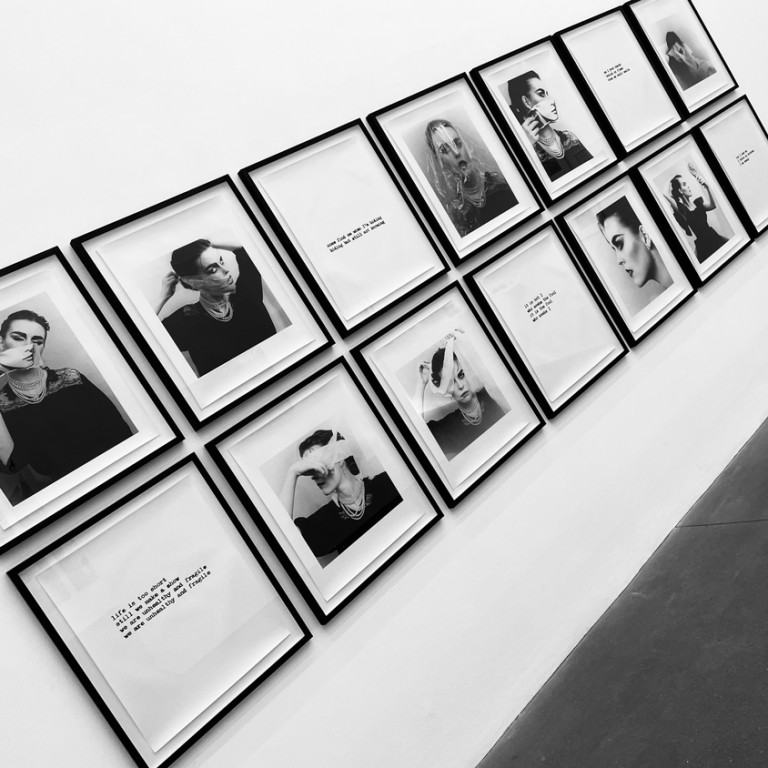
‘She/She’ (1981) Linder
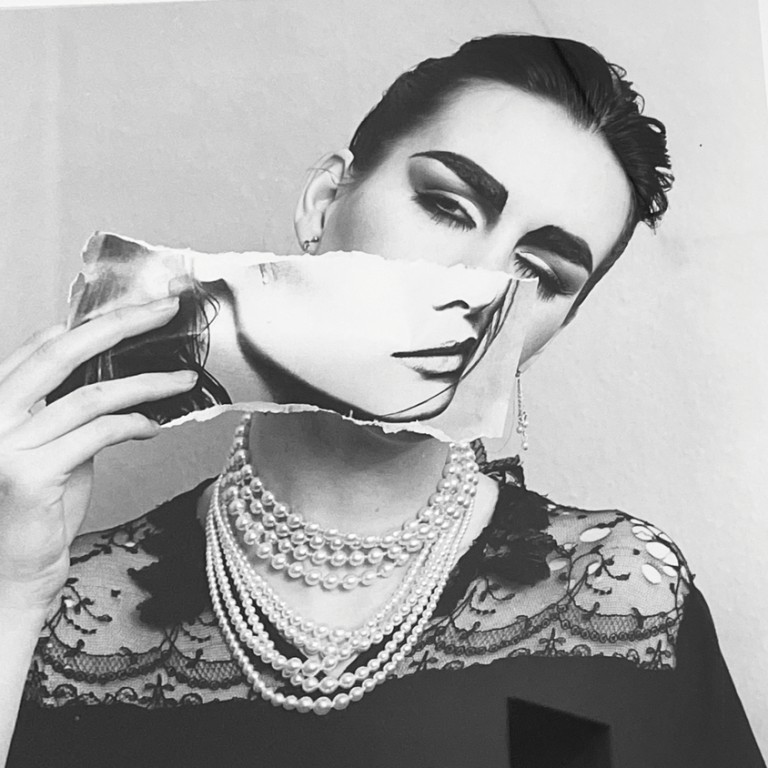
‘She/She’ (1981) Linder - Detail
An excellent piece. Fourteen frames, nine of which contained photographs of Linder herself.
The style of these photographs, intentionally reminiscent of a fashion magazine. Linder here is focussing on how magazines present women as a product for wider consumption. The partial covering of her face with other photographs, bandages or plastic signifying that the woman as a person is not what’s important. The expectation is that they engage in a costumed role play to fulfil traditional or societal norms of femininity.

‘Enantiodromia’ (2008) Linder
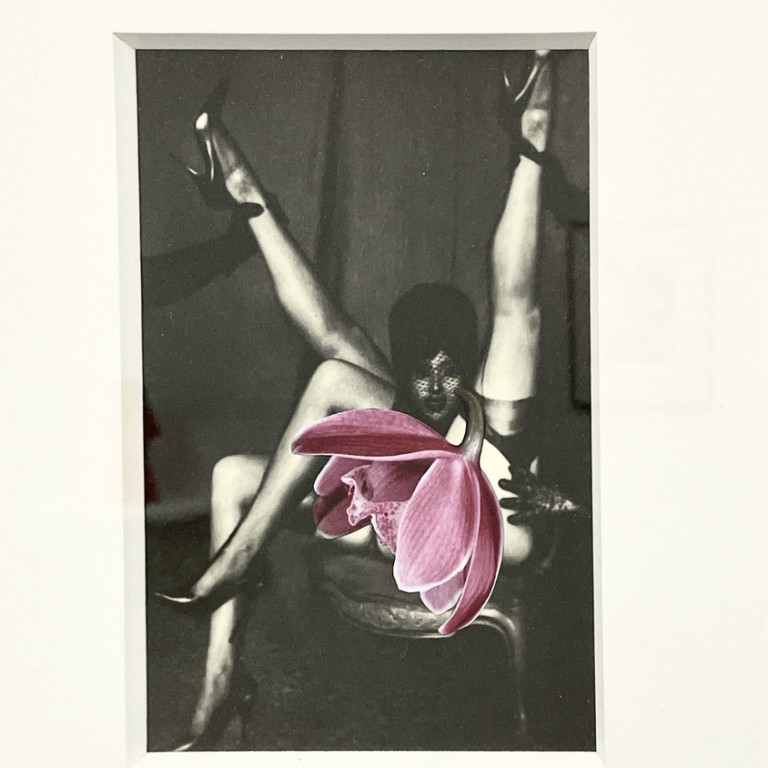
‘Les chamans et leur créatures V’ (2012) Linder
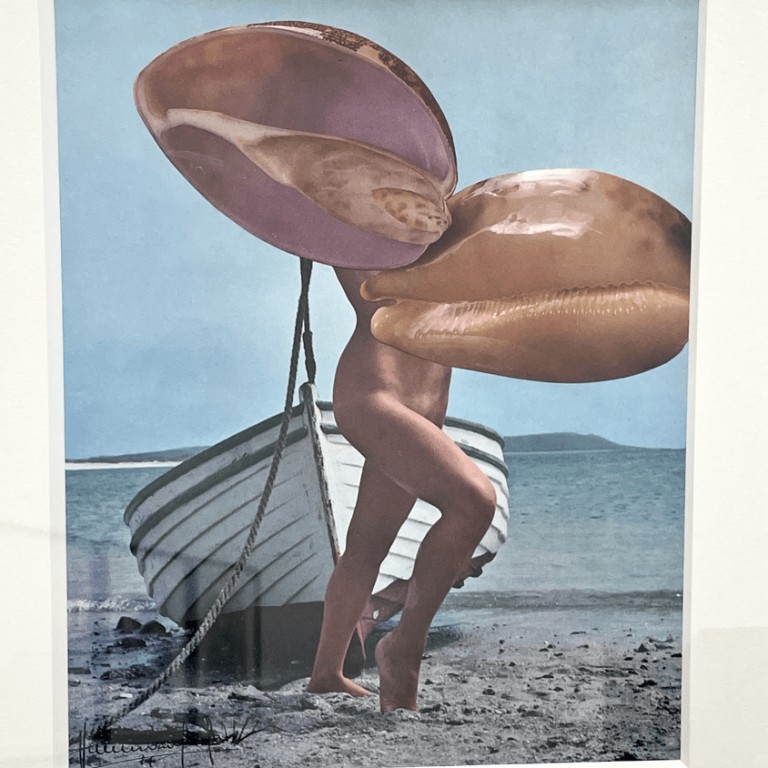
‘The Goddess Who has Five Faces’ (2019) Linder
Flowers imbued with a historic association of delicacy and femininity are used throughout Linder’s work as both armour and erotic stand-in. Despite the association, their use blocks the viewer’s gaze. With ‘The Goddess Who has Five Faces’, regarding women as meat has been taken to its literal limit. The humour here is used to highlight a serious issue within our society.
Wilke, a generation earlier than Linder, focussed heavily on the vulva as the means with which to confront misogyny.

‘S.O.S Starification Object Series’ (1974) Hannah Wilke
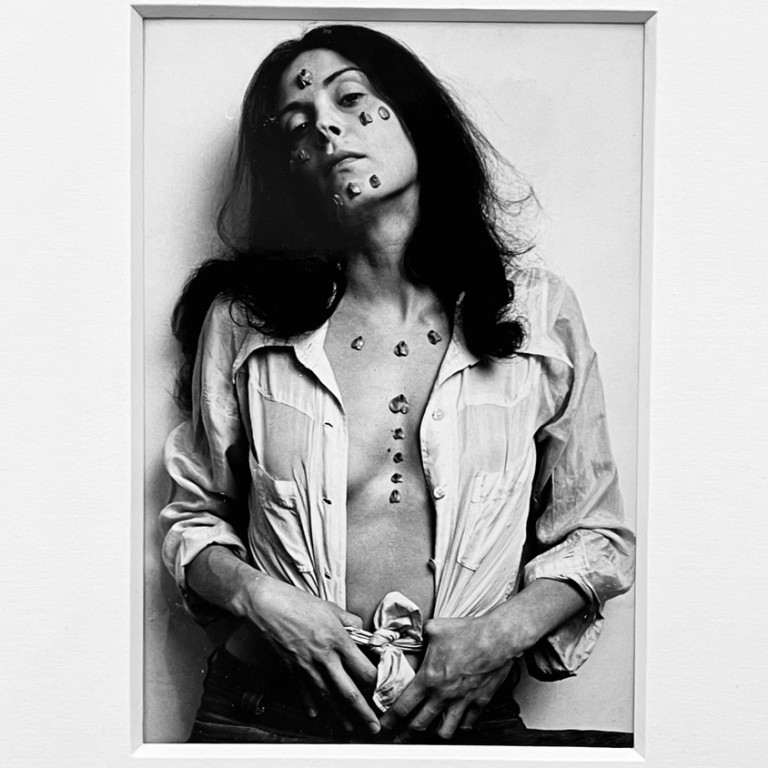
‘S.O.S Starification Object Series’ (1974) Hannah Wilke
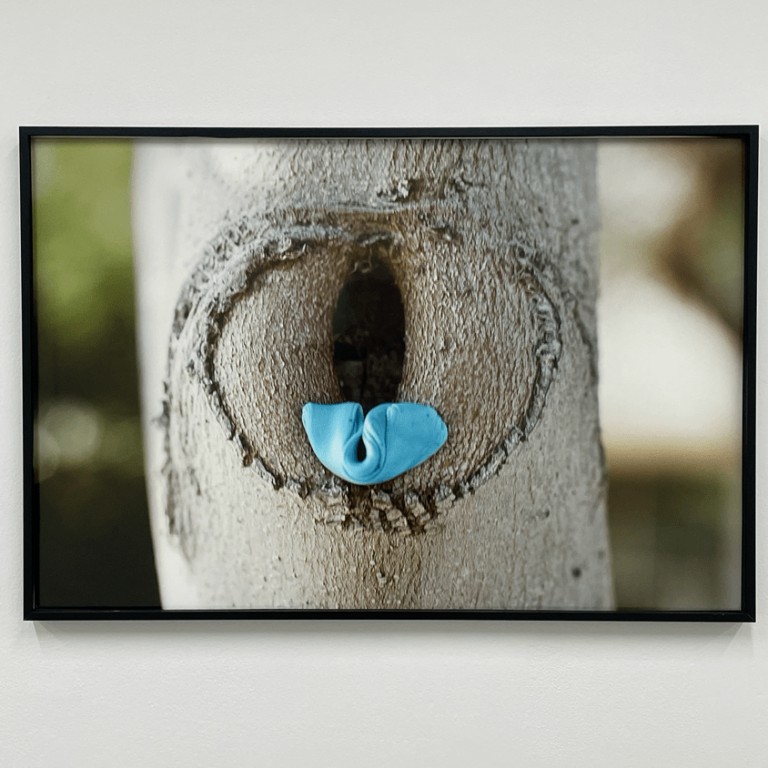
‘Untitled (Blue Gum on Tree Trunk, Los Angeles)’ (1976) Hannah Wilke
The chewing gum, a metaphor for the American woman. Wilke famously said you “Chew her up, get what you want out of her, throw her out and pop in a new piece”. Shaping pieces of chewing gum in to vulva like objects and sticking them over her face and body or on other objects, Wilke is constantly reminding the viewer of the vagina. Making the taboo and hidden unavoidably visible.
The exhibition therefore contained some key works in the development of a feminist narrative within the art world of the 70’s through to the present day. However Alison Jacques’ scatter gun approach to this, diluted the message.
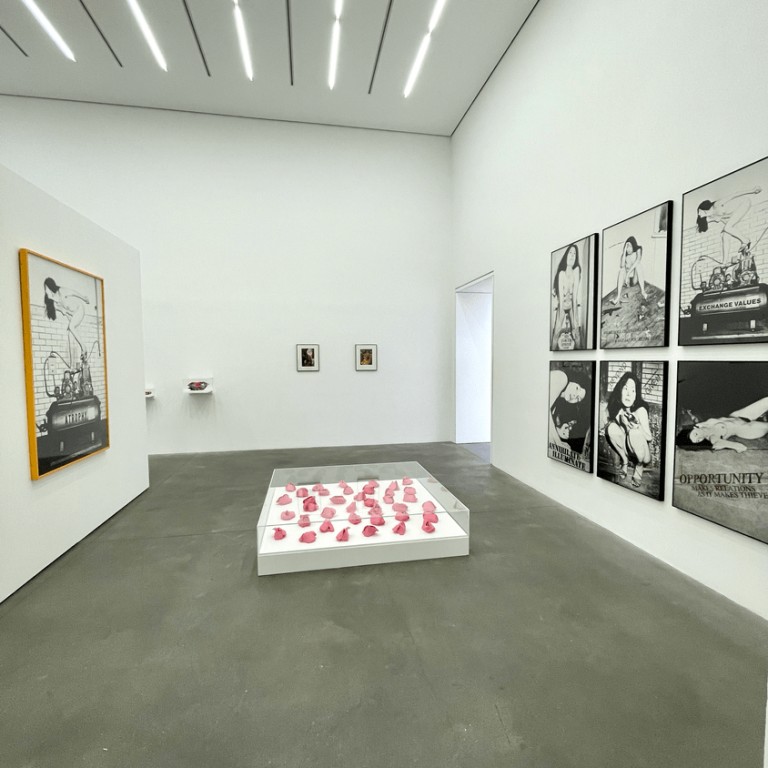
Installation View
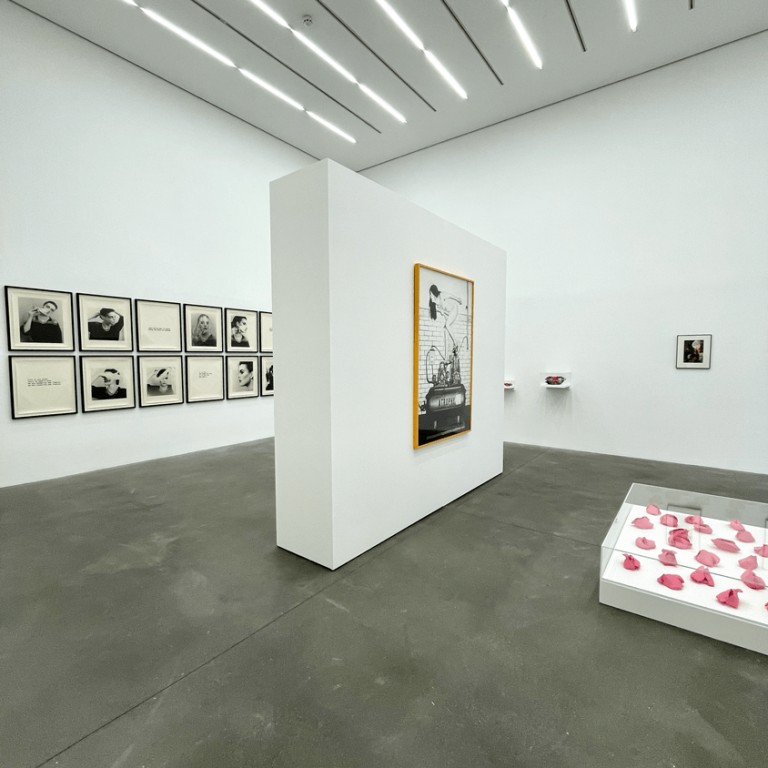
Installation View